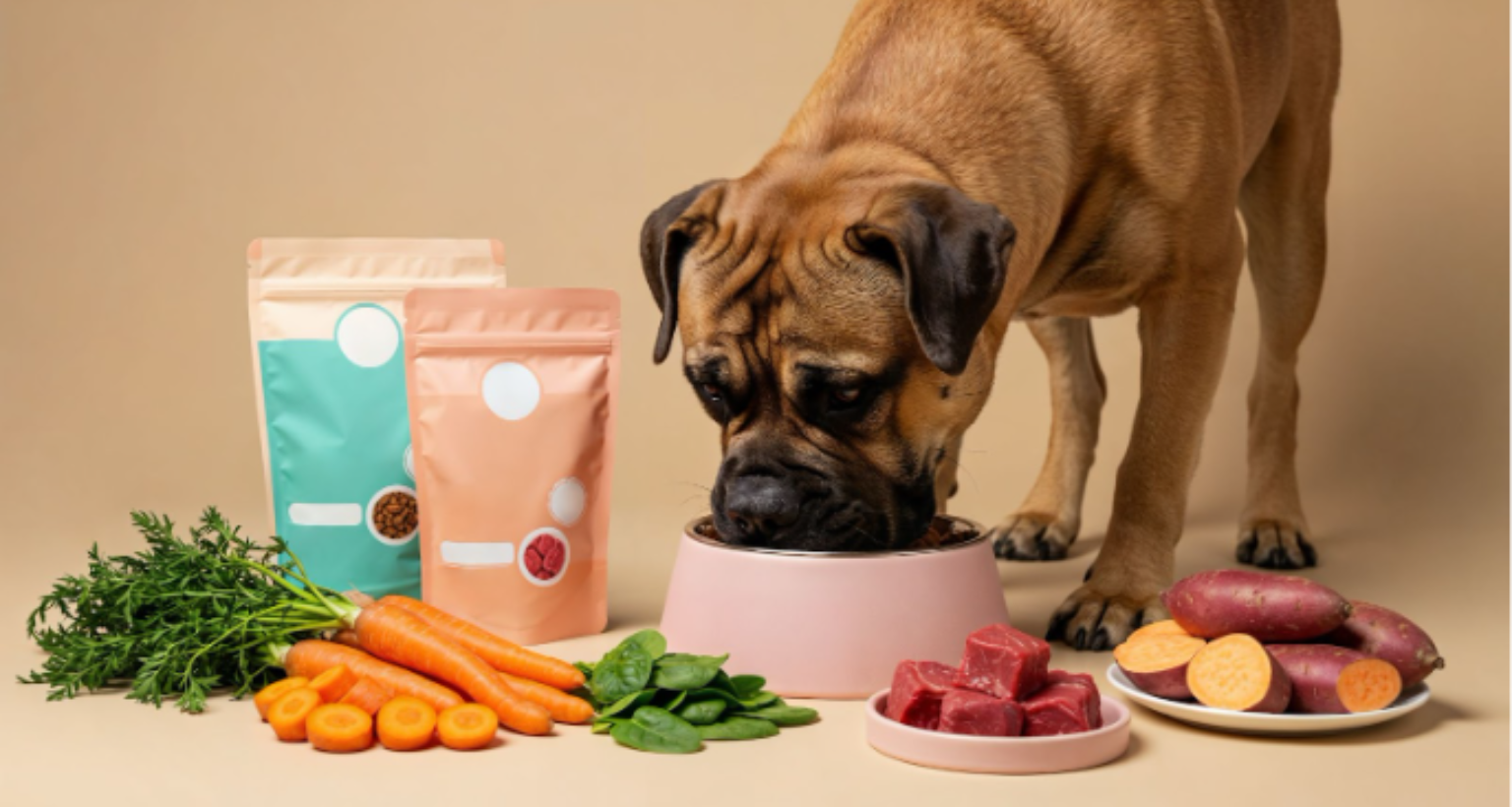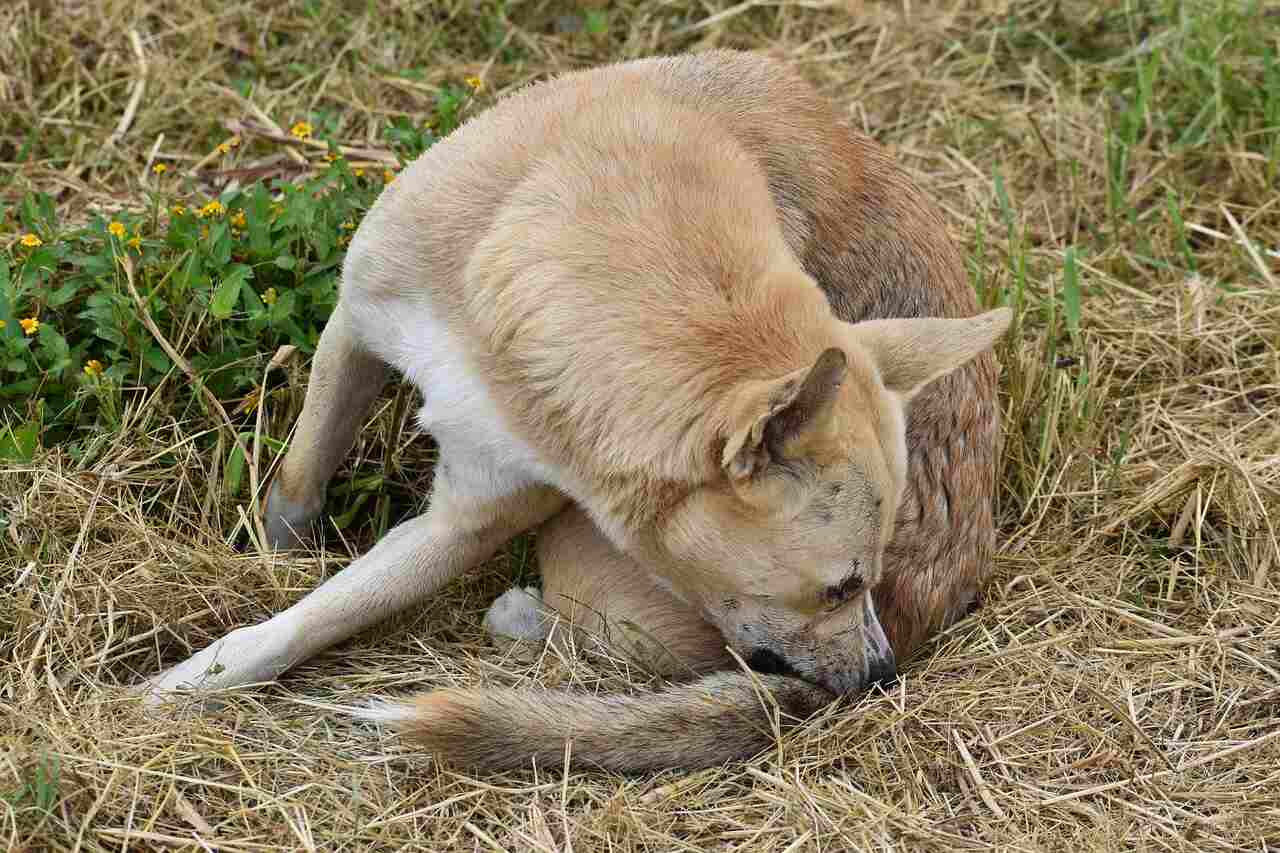Diet for dogs has undergone a ton of changes over time. From table scraps, and to processed dry dog food, now dog owners have a desire to feed their dog’s food with the whole and unprocessed ingredients. People have become more and more aware of the poor quality fillers, artificial flavors and preservatives in dog foods. Because of that, natural diets for dogs resemble what dogs were supposed to eat.
From there, healthy dog diets are broken down into raw diets, homemade dog food and organic or all natural manufacturers. Both have their own benefits and potential downsides, and learning more about how they work can assist you in making the best decision for your dog’s health over the long term. This manual explains in detail each of these methods, the science behind natural nutrition and walks you through how to feed safely.
Some reasons for the popularity of natural feeding include:
Natural feeding revolves around foods that resemble what dogs used to eat before the introduction of industrial dog food. This food is made of meat and vegetables, and is unprocessed with the only exception being whole grains. People who change their dog’s diets to natural often see a change for the better in their dog’s coat, digestion, energy, and health as well.
The following are some of the main factors that have contributed to natural feeding’s increasing popularity:
1. Ingredient Transparency: Dog owners appreciate transparency, clear and simply stated ingredients over long, barely readable, additive and chemical infused ingredient statements.
2. Digestive Benefits: Because of the basic, digestible, whole-food, and filler free ingredients, natural foods often result in better digestion.
3. Allergies and Sensitives
Preservatives, wheat, corn, and any sort of synthetic flavoring and these sensitivities are often some of the leading causes of food sensitivities in dogs. Natural diets decrease these triggers
4. Better Skin and coat: Dogs are frequently susceptible to dry itchy skin, which can be countered by a diet with fresh meats and oils for optimal levels of essential fatty acids that promote healthy skin and a lustrous coat.
5. High-Quality Nutrient: Natural Formulations The term “natural” diets are, of course, more natural. They are more “whole”, less processed, more nutritious, than other diets overall too fancy for those you feed.
Not all dogs are alike, so not every dog should be fed the same. Get it: Raw, natural and Homemade Organic diets To better understand this process will be in their diet.
Raw Dog Food: Nature in Its Purest Form
Raw dog food is created to resemble what a wild dog would be consuming, so it’s mainly comprised of:
- Meat
- Raw meaty bones
- Organs
- Eggs
- A small mix of vegetables or fruit
Feeding a dog raw is seen as a way to provide dogs with the benefits of unprocessed food in a way that does not minimize the nutrients that processed and processed food can shelter.
Advantages of Raw Diets:
1. Explain Healthier Teeth and Gums
The act of chewing on raw bones scrapes teeth and makes plaque buildup less. It also gets jaw muscles stronger.
2. Explain Healthier Skin and Smoother Fleeces
The good natural fats and the proteins of high quality make the fleeces smoother and the skin healthier.
3. Explain Better Digestion
For more dogs digestion is easier and smoother when on raw diets. It also contains less carbs of the processed type.
4. Explain Higher Energy and Better Muscle Tone
The raw meals of high protein content have more muscle in them and make dogs more energetic. This is especially good for more active dogs.
5. Explain Getting Natural Behavior
For chewing mental stimulation and less boredom It also gives texture and the bones are raw.
Risks and Limits of Raw Feeding:
Feeding raw diets is something that cannot be done without great caution. Though dogs are raw food eaters without a doubt. This food contains:
1. Explain Getting Bacteria
Raw meat can become tainted with bacteria like E. coli, listeria and salmonella. By keeping them clean, freezer and correctly handling can decrease the risk or not make it go away.
2. Explain Getting Incomplete Nutrition
If a dog eats only meat, it’s going to end up with a vitamin and calcium deficiency. Raw diets also need to have a muscle meat and bones balance to be complete.
3. Not Suitable for Every Dog
A few dogs – for example, puppies, elderly dogs and sick dogs with compromised immune systems – may also be too vulnerable to eat raw food. Cooked diets or other balanced alternatives may be required to safely meet the dog’s nutritional needs.
4. Cost and Storage Challenges
Raw diets require high-quality meats, which can be expensive. Houses need to be able to have enough freezer space for storing meat which is an added expense.
Homemade Dog Food: Complete Control Over Ingredients
Which goes a long way, toward explaining why homefeeding has become popular among dog owners: full transparency. When you cook, you get to:
- Select high-quality, fresh proteins.
- Avoid additives, imitation and artificial preservatives.
- Customize the dinner for sensitivities and/or allergies.
- Adapt the meal to suit medical, age or weight requirements
Cooked meat, whole grains and vegetables, and antioxidant-rich meals may round out a homemade dog diet.
Benefits of Homemade Diets
1. Precision and Customization
Home-made diets can be tailored to individual dogs’ nutritional requirements. For instance, if a dog is allergic to poultry then the recipe can be given in beef or fish.
2. Improved Digestive Health
By cooking food you can help to maintain a healthy digestive system, which is also beneficial if your dog has a sensitive stomach.
3. Clean Ingredient Lists
There are no un-necessary fillers, and no artificial additives Great diets that provide excellent nutrition without high chemical levels.
4. Better Flavor and Palatability
There is something about the scent and feel of home-made food
5. Ideal for Dogs with Chronic Conditions
Vet-guided recipe modifications are useful for some dogs with kidney disease, excessive weight, and some other digestive issues.
Precautions for Homemade Feeding
1. Balanced Nutrition Is Essential
Dogs need a precise combination of different things. Lack of some nutrients may lead to serious issues down the line.
2. Need for Supplements
Calcium is especially important in homemade diets. Bones may get weak over time if supplementation is absent.
3. Time Commitment
Consistency is needed to prepare meals every day or batch cooking for the week to relieve yourself of daily cooking.
4. Avoid Toxic Ingredients
Stay away from substances like garlic, macadamia nuts, grapes, chocolate, some spices and onions, not to mention a sugar alternative called xylitol.
Homemade diets remain some of the most variable ways to feed food, but they still have to be done correctly to provide a diet that will be nutritional over time.
Organic Dog Food: Cleaner and More Natural Feeding
Most dog owners tend to prefer the organic foods for their pets because it’s much easier and cheaper when they have an entirely natural nutrition, it means that they don’t need to cook in every meal. In order for a product to be organic it just, by definition cannot have the following grown and/or raised with:
- Pesticides
- Chemical fertilizers
- Antibiotics
- Synthetic preservatives
Organic pet foods can be found as kibbles, canned food, freeze-dried and dehydrated recipes, and fresh foods delivered through a subscription service.
Benefits of Organic Diets
1. Fewer Chemicals and Additives
There is no pre-processing and added preservatives to organic food, they are even less exposed to health-inhibiting additives such as pesticides.
2. Cleaner Protein Sources
Organic meat tends to be from animals raised with a prohibition on the contentious routine practice of using antibiotics and hormones.
3. Improved Digestive Comfort
Sensitive stomachs might do better on organic formulas Dogs are more likely to thrive on clean and organic, not over-processed diets.
4. Higher-Quality Ingredients
But with the heavy scrutiny in certifying organic, comes more quality and greater production standards.
5. Easy and Convenient
With organic dog foods, you do not have to spend the effort and time to prepare food yourself, and have balanced nutrition easy and convenient for your dogs, as compared to raw and homemade diets.
Challenges of Organic Feeding
1. Higher Price
Finished pet foods are more expensive as a result of higher production costs of organic ingredients.
2. Still Processed
A lot of the organic foods out there, especially the dried and kibble, go through a lot of manufacturing processes which defeat the purpose of being organic and natural.
3. Ingredient availability
Not every single grocery store offers organic dog food, and some brands might be hard to find for periods of time.
Organic diets have the most nutritional benefits and are of the most natural form.
Where high-quality treats fit into natural diets
Natural diets for dogs do not just stop at the daily meals. There are also treats that promote clean and balanced nutrition. Many dog owners prefer to give their dogs real meat dog treats. These dog treats contain clean, simple ingredients and offer fillers and additives free protein. They are perfect for owners of dogs on raw, homemade, or organic diets to help with training, and also support overall dog’s nutrient intake.
Raw vs Homemade vs Organic: A Clear Comparison
| Diet Type | Advantages | Challenges | Best Suited For |
Raw | High protein, natural enzymes, reduced fillers | Requires safe handling, may cause nutritional imbalance | Active dogs, owners committed to preparation |
Homemade | Customizable, clean ingredients, ideal for allergies | Requires time, supplements, careful planning | Dogs with medical needs or sensitivities |
Organic | Clean ingredients, safe, convenient | Higher cost, still processed | Owners wanting natural nutrition without cooking |
How to transition to a natural diet?
Changing a dogs diet to fast can cause them to have an upset stomach so it is best to transition to slowly:
1) Begin with small portions
To start for the first few days try mixing 80% of their old food with 20% of the new food.
2) Gradually Increase
After several days of mixing 80% of old food with 20% of new, try mixing a 50/50 ratio and then move on to a 70/30 with the new food and continue to increase the ratio until the switch is complete.
3) Observe stool and behavior.
Transitioning without issues signs include a consistent stool, constant appetite, and normal amount of energy.
4) Adjust portion sizes
Natural diets usually include a different amount of calories than a normal kibble.
5) Vet consult for special cases.
This includes puppies, older dogs, and dogs with chronic issues. They should be transitioned with the help of a vet.
Conclusions
Choosing what kind of diet to have for your dog can have a big impact in terms of what will benefit your dog’s long-term health. Cooking meals yourself, feeding them raw, or even feeding them organic food can provide way more benefits than regular commercial dog food. Apart from food, health and diet are also important, make sure to provide them safety, balance, and consistency. Each of those will help in being health and diet safe.
Natural diets for dogs have their challenges. Not everyone can pull it off the way it needs to be done. The good news, though, is that those elements can contribute to better health in your dog, improved digestion, stronger immune system, better skin, more energy, and more. A good, healthy diet for your dog can be achieved with things like fresh ingredients, and their balance along with clean proteins.




